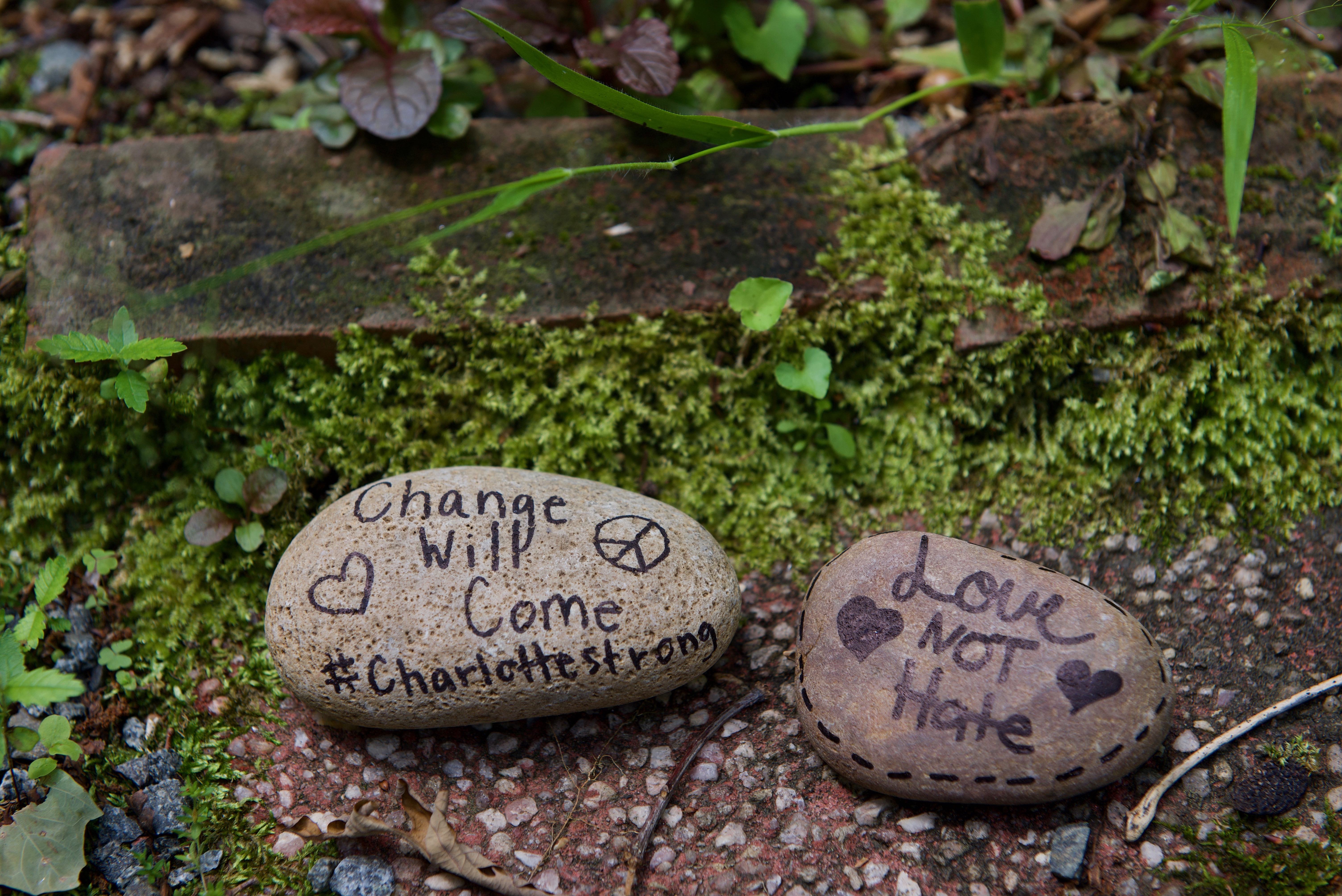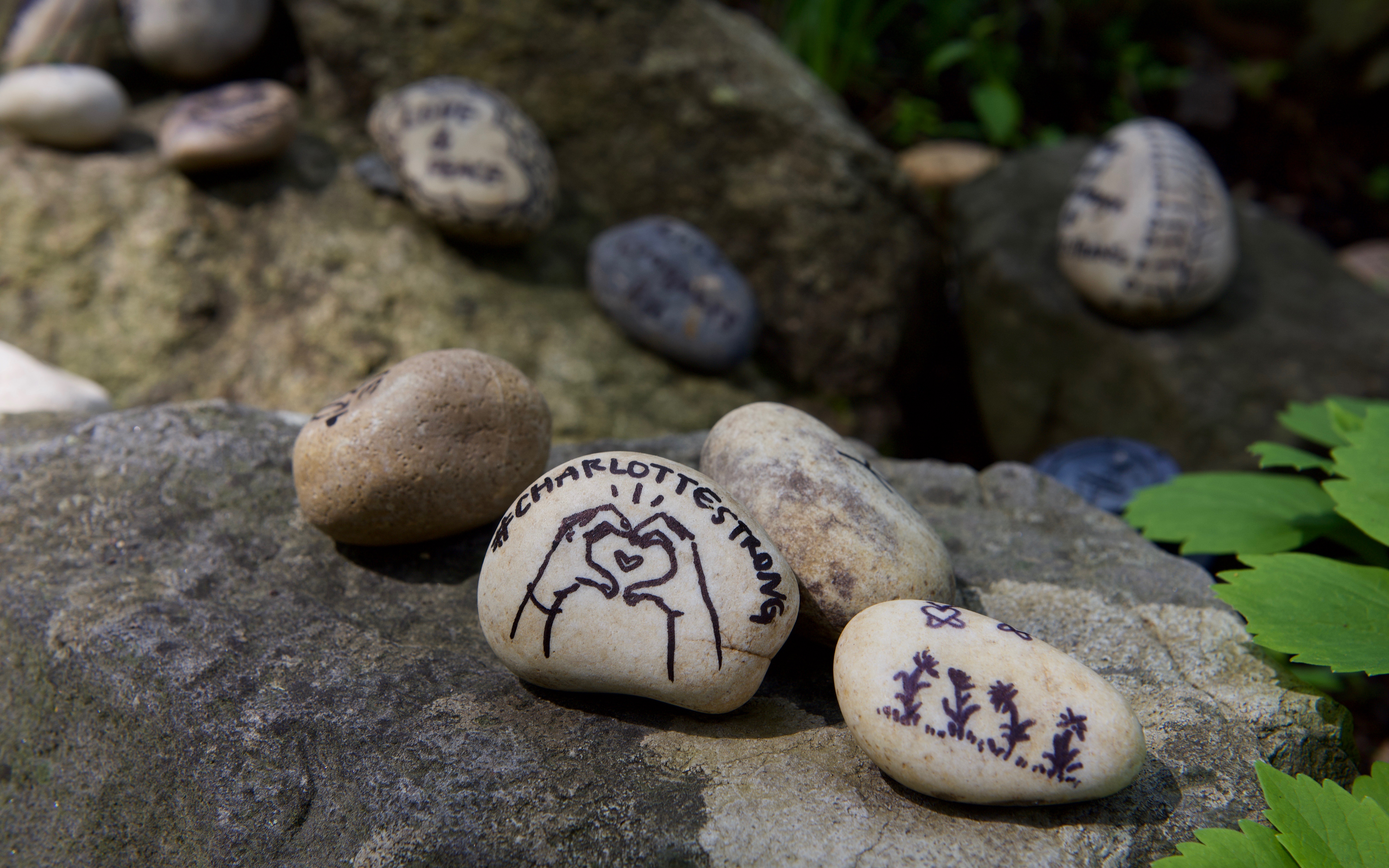Community members have sought solace in the UNC Charlotte Botanical Gardens after the tragic events of April 30, when an individual opened fire in a UNC Charlotte classroom, killing two students and injuring four others. The visitors found a humble table at the entrance to the Susie Harwood Gardens. There, stacked, were smooth gray, white and brown stones and black markers for people to leave messages, artwork, memories, and prayers.
Over the following weeks, the stones were tucked along the Botanical Gardens’ paths, sending their messages forward in a collective way. The Botanical Gardens staff have now gathered and stored the stones, which will be used in a more permanent commemoration in the future.
“Like the rest of campus, we are all deeply troubled by what happened and wanted to do something besides just being here,” Botanical Gardens Director Jeff Gillman says. “The remembrance stones were our answer, and we are happy that we can be a part of the healing process.”
Individuals and groups came to the Botanical Gardens to find refuge and to connect. Deborah Thomas, chair of the Department of Geography and Earth Sciences, emailed and invited class members to join together in the Botanical Gardens for an informal and optional meeting, she says.
“The Botanical Gardens were an important part of the healing process for me, for my class, and I am sure others,” Thomas says. “My class was in lockdown together the evening of the tragedy. Afterwards, although finals were optional and they had submitted much of their work, I thought it would be nice to offer an opportunity to get together on our finals night. Many of us met at the gazebo, had a casual dialog about class, and chatted about the upcoming summer.” Several students also left stones along the path and told her the activity was calming and touching.


Assistant Director Amy Tipton provides more insights into how the concept came about and how the community reacted.
What led to this idea?
We had originally planned a spring concert and festivities to celebrate May Day, to occur the day after the shootings. Given the circumstance and the joyous nature of the concert planned, we decided to cancel the concert. As a result, the staff had conversations about the different aspects of the Gardens. The Gardens offers a place of joy and beauty as well as a place of refuge and contemplation. We recognized that the Gardens have great potential for healing and wanted to organize a project to welcome the UNC Charlotte community to use the Gardens as a resource to assist with healing.
How did you decide to offer the stones as a remembrance concept?
We chose to use river stones as the medium for the interactive project, as many cultures around the world use stone(s) to memorialize people, mark events, and exhibit faith – such as tombstones, cairns, and inuksuk. In addition, we felt that the stones would provide a very personal and tactile experience – selecting “your” stone, feeling its weight and texture, contemplating text or an image, embellishing the stone, and placing it along a path. We worked out the details of the project over the course of the next few days, and started it on the Monday following the tragedy.
What are your hopes for the role of the Botanical Gardens as the UNC Charlotte community continues to process and grieve?
Envisioned as a very private, personal act, we found that the embellishment and placement of the stones unexpectedly created a larger experience of knowing that we are all part of a caring, united UNC Charlotte community. I personally found that in addition to the process of embellishing the stone, the act of walking through the Gardens to select a location to place it added to the healing experience. Finding so many others’ stones along the paths gave me a sense of how many individuals were affected by the tragedy. We hope that the Gardens can continue to contribute to the healing process.
Words: Amy Tipton, with Lynn Roberson | Images: Lynn Roberson








